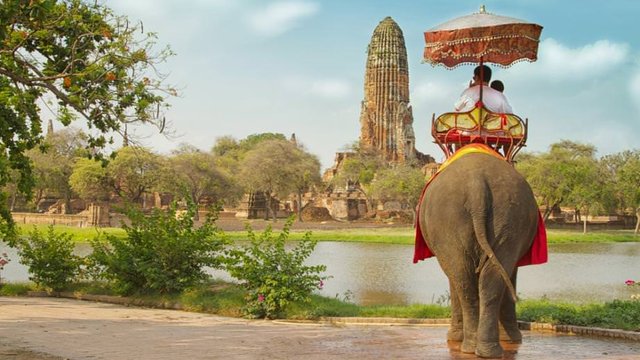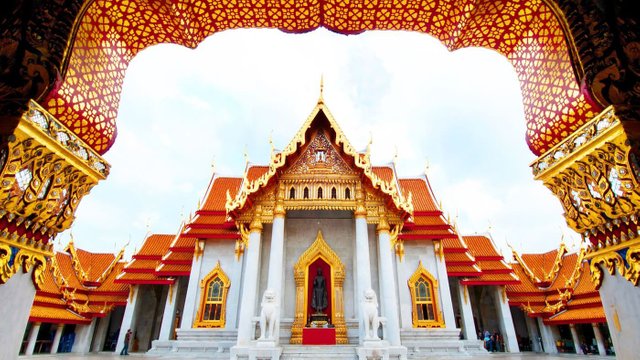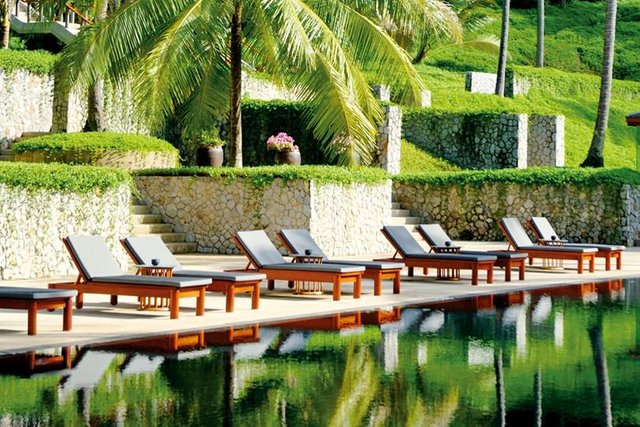The natural scenario of Thailand (Etymology of Thailand)
Etymology of "Thailand"

As indicated by George Cœdès, the word Thai (ไทย) signifies "free man" in the Thai dialect, "separating the Thai from the locals included in Thai society as serfs."[19] An acclaimed Thai researcher contended that Thai (ไท) essentially signifies "individuals" or "person", since his examination demonstrates that in some country territories "Thai" was utilized rather than the standard Thai word "khon" (คน) for people.[20]
While Thai individuals will frequently allude to their nation utilizing the respectful shape prathet (Thai: ประเทศไทย), they most generally utilize the more informal term mueang (Thai: เมืองไทย) or essentially Thai, the word mueang, anciently a city-state, ordinarily used to allude to a city or town as the focal point of a locale. Ratcha Anachak (Thai: ราชอาณาจักรไทย) signifies "kingdom of Thailand" or "kingdom of Thai". Etymologically, its parts are: ratcha (Sanskrit राजन्, rājan, "ruler, regal, domain") ; - ana-(Pali āṇā "expert, charge, control", itself from the Sanskrit आज्ञा, ājñā, of a similar importance) - chak (from Sanskrit चक्र cakra-"wheel", an image of energy and run the show). The Thai National Anthem (Thai: เพลงชาติ), composed by Luang Saranupraphan amid the amazingly energetic 1930s, alludes to the Thai country as: prathet (Thai: ประเทศไทย). The primary line of the national song of devotion is: prathet thai ruam lueat nuea visit chuea (Thai: ประเทศไทยรวมเลือดเนื้อชาติเชื้อไทย), "Thailand is the solidarity of Thai fragile living creature and blood."

Present day history
See likewise: History of Thailand (1932– 1973) and History of Thailand since 1973
The historical backdrop of Thailand from 1932 to 1973 was commanded by military fascisms which were in control for a great part of the period. The primary identities of the period were the tyrant Luang Phibunsongkhram (also called Phibun), who associated the nation with Japan amid the Second World War, and the non military personnel lawmaker Pridi Phanomyong, who established Thammasat University and was quickly the PM after the war.
A progression of military tyrants took after Pridi's expelling — Phibun once more, Sarit Thanarat and Thanom Kittikachorn — under whom conventional, dictator administer was joined with expanding modernisation and westernization affected by the US. The finish of the period was set apart by Thanom's renunciation, following a slaughter of master majority rules system dissenters drove by Thammasat understudies. Thanom misread the circumstance as a rebellion, and fled, leaving the nation leaderless. HM selected Thammasat University chancellor Sanya Dharmasakti PM by regal order.
Thailand helped the USA and South Vietnam in the Vietnam War between 1965– 1971. The USAF based F-4 Phantom contenders at Udon and Ubon Air Base, and positioned B-52s at U-Tapao. Thai powers likewise observed substantial activity in the secret war in Laos that happened from 1964 to 1972.
In 1973, there was a prevalent uprising which brought about the finish of the decision military autocracy of against socialist Thanom Kittikachorn and modified the Thai political framework. Eminently, it featured the developing impact of Thai college understudies in governmental issues.
For the greater part of the 1980s, Thailand was led by leader Prem Tinsulanonda, an equitably inclined[citation needed] strongman who reestablished parliamentary legislative issues. From there on the nation remained a majority rules system separated from a short time of military control from 1991 to 1992. The populist Thai Rak Thai gathering, drove by leader Thaksin Shinawatra, represented from 2001 until 2006. In 2006 mass dissents against the Thai Rak Thai gathering's charged debasement, incited the military to arrange an overthrow, in September. A general race in December 2007 reestablished a regular citizen government, yet in May 2014 another military upset restored the total energy to the armed force.
